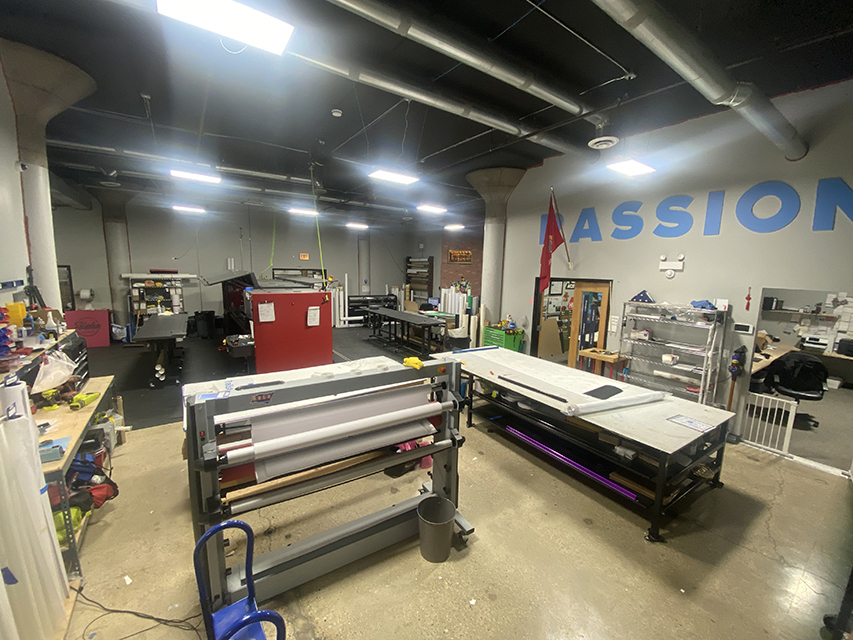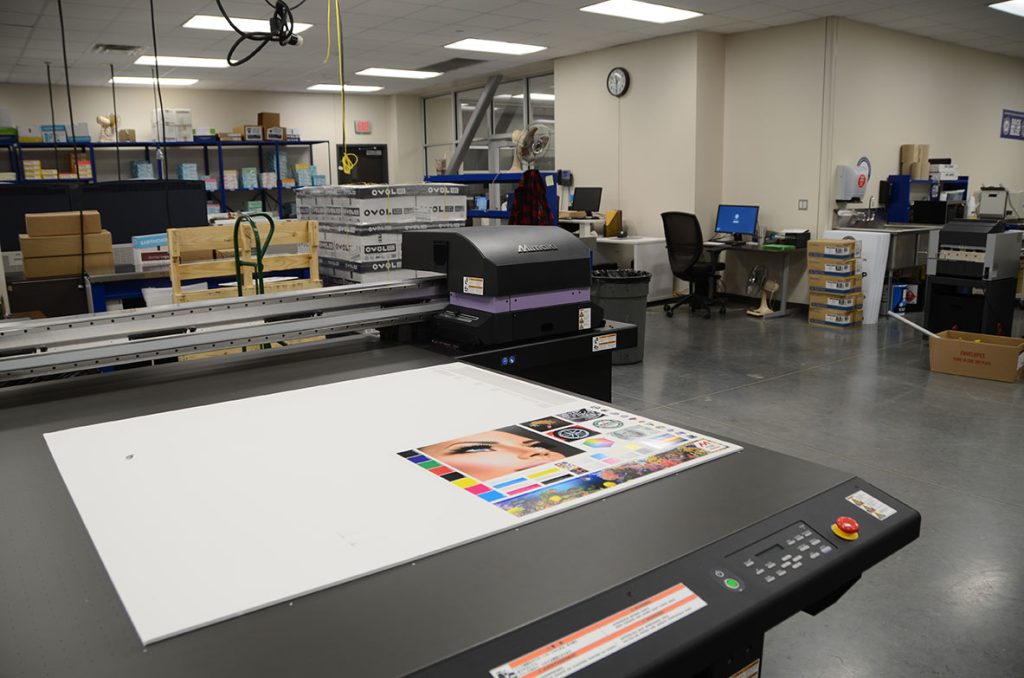The Ultimate Overview to Making Use Of Printing Solutions for Customized Art Prints
Guiding with the world of customized art prints calls for a clear understanding of different printing solutions. Artists need to consider aspects such as printing methods and materials to achieve the desired end result. Each decision, from art work prep work to shade calibration, plays an important function in the end product. As they explore these aspects, artists can disclose the capacity for their work to connect with audiences in a purposeful method. What steps can they require to guarantee their prints attract attention?
Recognizing Various Kinds Of Printing Services
Although many individuals may ignore the intricacies of printing solutions, understanding the various kinds available is essential for anyone looking to produce custom-made art prints. The most usual types consist of electronic printing, counter printing, and display printing. Digital printing is favored for its quick turnaround and capability to create top notch pictures straight from digital documents, making it optimal for small runs. On the other hand, offset printing deals remarkable image high quality and is economical for larger amounts, making use of plates to transfer ink onto paper. Screen printing, commonly made use of for fabrics and promotional products, includes pushing ink through a mesh screen, enabling vivid colors and appearances. Each approach has its distinct advantages and constraints, making it vital for artists and developers to assess their specific requirements, such as amount, wanted quality, and budget plan, before selecting a printing solution that straightens with their artistic vision.
Picking the Right Materials for Your Prints
Choosing the suitable products is crucial for achieving premium customized art prints. Understanding the numerous sorts of paper and the importance of ink quality can significantly influence the result. Artists should consider these variables to assure their vision is precisely represented in the printed piece.
Paper Kind Explained
Picking the ideal paper kind is necessary for achieving the desired visual and longevity in custom-made art prints. Various options exist, each offering distinct features. Shiny paper enhances shade vibrancy and information, making it excellent for photography prints. On the other hand, matte paper offers a softer coating, which is more effective for art work that requires nuance and texture. Art paper, usually made from cotton or alpha cellulose, provides historical top quality and appropriates for replicating intricate information in paints (Print Shop Near Me). Additionally, specialty documents, such as watercolor or canvas, can add one-of-a-kind visual impacts. Ultimately, picking the suitable paper kind will substantially influence the final discussion, making certain that the artwork is both long-lasting and visually attractive
Ink Top Quality Matters
Ink top quality plays an essential function in the overall success of custom-made art prints. High-quality inks guarantee vibrant shades, sharp information, and longevity, which are essential for showcasing artistic job. When choosing printing solutions, musicians should think about pigment-based inks over dye-based choices, as they provide much better fade resistance and shade stability. Additionally, the selection of ink need to complement the chosen paper type, boosting the print's aesthetic influence. Environmental variables, such as humidity and temperature level, can additionally impact ink efficiency; therefore, musicians ought to ask about ink formulas that withstand these components. Inevitably, buying exceptional ink quality can boost the end product, guaranteeing that the art print remains true to the musician's vision for years to come.
Discovering Printing Strategies: Digital vs. Conventional
While both standard and electronic printing methods have their special benefits, the choice on which method to use often hinges on the details requirements of the art work. Digital printing masters flexibility and rate, permitting fast turn-around times and the ability to publish on demand. This approach is particularly valuable for artists that call for unique items or small runs, as it removes the need for substantial setup processes.Conversely, traditional printing methods, such as lithography and display printing, usually create richer structures and colors, interesting artists seeking a much more responsive and genuine surface. These methods can enhance the depth and top quality of the artwork, making them suitable for bigger versions. In addition, conventional methods might supply an unique aesthetic that electronic printing often battles to reproduce. Ultimately, the choice in between these strategies should take into consideration elements like preferred top quality, amount, and imaginative intent, assisting musicians to one of the most appropriate choice for their jobs.

Preparing Your Art Work for Printing
Effectively preparing art work for printing needs cautious interest to information, despite the picked printing technique. Musicians should guarantee that their files are produced at the ideal resolution, normally 300 DPI, to preserve sharpness and clarity. The correct color mode, normally CMYK for print, is important to achieve the desired shade precision. Musicians must additionally take into consideration the dimensions of the artwork, making certain to consist of bleed locations if required, to avoid any kind of undesirable white sides after trimming.Additionally, data formats play a crucial role; TIFF and PDF are usually chosen for top quality prints. Prior to entry, it's essential to assess the artwork for any kind of flaws or unwanted elements. By diligently examining these aspects, artists can boost the likelihood of their prints lining up with their innovative vision, inevitably resulting in an effective printing outcome.
The Value of Shade Calibration and Proofing
Color calibration and proofing are essential steps in the printing process, as they assure that the last output properly reflects the artist's vision. Correct color calibration guarantees that the colors showed on the display match those that will certainly be published. This procedure entails changing the display setups, printer profiles, and inks to attain a consistent shade representation.Additionally, proofing allows musicians to preview their work prior to the last print run. This stage allows them to detect and fix any type of discrepancies in saturation, color, or detail, thereby decreasing pricey errors. By utilizing hard-copy or electronic evidence, artists can make enlightened choices concerning modifications needed for optimal results.Incorporating color calibration and proofing right into the printing workflow not just improves the top quality of the end product but likewise fosters a trusted collaboration between the printing and the artist service, guaranteeing satisfaction and fidelity to the initial art work.
Choosing the Perfect Dimension and Format for Your Prints

Advertising and marketing and Marketing Your Customized Art Prints
Advertising and selling customized art prints needs a solid brand name identity to stick out in an affordable market. Efficient on-line promo strategies and the strategic usage of social media platforms can significantly improve presence and engagement. By incorporating these aspects, musicians can create an engaging visibility that brings in potential customers.
Building Your Brand Name Identification
Developing a solid brand identification is essential for musicians seeking to successfully market and sell their personalized art prints. This identity encompasses the musician's one-of-a-kind design, worths, and tale, which reverberate with potential buyers. Artists must develop a natural aesthetic existence across all platforms, including logos, color schemes, and typography that mirror their imaginative vision. Furthermore, a clear objective declaration aids connect the musician's objective and enthusiasm. Engaging narration concerning the motivation behind each item can foster emotional links with the audience. Uniformity in messaging, whether on social networks or product packaging, enhances recognition and depend on. By very carefully curating their brand name identification, musicians can differentiate themselves in a competitive market, drawing in dedicated clients who appreciate their creativity.
Effective Online Promotion Strategies
What approaches can artists employ to efficiently advertise their custom art publishes online? First, establishing an expert site showcasing the artwork is important. This website must consist of top quality photos and thorough summaries to engage possible customers. Additionally, musicians can use email advertising by constructing a client list to share updates, promos, and new releases. Teaming up with blog writers and influencers in the art community can broaden reach and trustworthiness. Using unique pieces or limited-time discounts can additionally develop urgency, motivating acquisitions. Enhancing material for search engines through appropriate key phrases will enhance presence. Maintaining a blog site about the creative process can draw in art fanatics, fostering a deeper connection with the target market and boosting the general marketing technique.
Using Social Media Operatings Systems
Social media site platforms offer as effective devices for musicians looking to market and sell their personalized art prints. By leveraging systems like Instagram, Facebook, and Pinterest, musicians can display their work to a huge target market. Engaging visuals and strategic hashtags can enhance visibility, attracting potential purchasers to their profiles. Routinely uploading content, such as brand-new layouts or behind the curtain processes, helps keep audience passion and cultivates a sense of area. In addition, artists can utilize targeted advertising to get to particular demographics, enhancing the possibilities of sales. Partnerships with influencers or other musicians can additionally intensify direct exposure. Inevitably, a well-curated social media presence not only advertises customized art prints yet also develops a loyal client base over time.
Frequently Asked Questions

How Do I Find Reliable Printing Company?
To find reliable printing company, one must research online testimonials, seek suggestions from peers, compare portfolios, demand samples, and analyze consumer solution responsiveness. This complete strategy assurances educated decisions and adequate outcomes.
What Is the Common Turn-around Time for Custom-made Prints?
The typical turn-around time for custom-made prints differs by company, yet normally varies from a couple of days to two weeks. Aspects affecting this consist of order size, intricacy, and the certain printing methods made use of.
Can I Get a Reimbursement if I'm Not Pleased With My Prints?
The concern of obtaining a reimbursement for unsatisfactory prints frequently depends on the particular printing solution's policies. Numerous business offer contentment assurances, while others may have stringent return problems, highlighting the value of examining terms beforehand.
Are There Any Hidden Prices Related To Printing Services?
Lots of printing services may consist of concealed costs such as setup costs, shipping costs, or added charges for specific products. It's crucial for consumers to make inquiries concerning all prospective expenses before completing their order.
Exactly How Can I Ensure My Prints Are Environmentally Friendly?
To ensure prints are environmentally pleasant, one ought to select green inks, recycled paper, and lasting printing methods. Investigating printing solutions that focus on sustainability and acquiring certifications can additionally guarantee minimal ecological impact in the printing procedure. Steering with the globe of personalized art prints requires a clear understanding of various printing services. Numerous people may overlook the intricacies of printing services, understanding the various types readily available is essential for anyone looking to produce customized art prints. The most usual kinds include digital printing, balance out printing, and screen printing. Effectively preparing artwork for printing needs careful interest to detail, no matter of the picked printing technique. Prints intended at galleries may require standard sizes to help with framework, whereas one-of-a-kind useful reference formats might appeal to collectors looking for something distinctive.Lastly, the printing service's abilities must be examined.